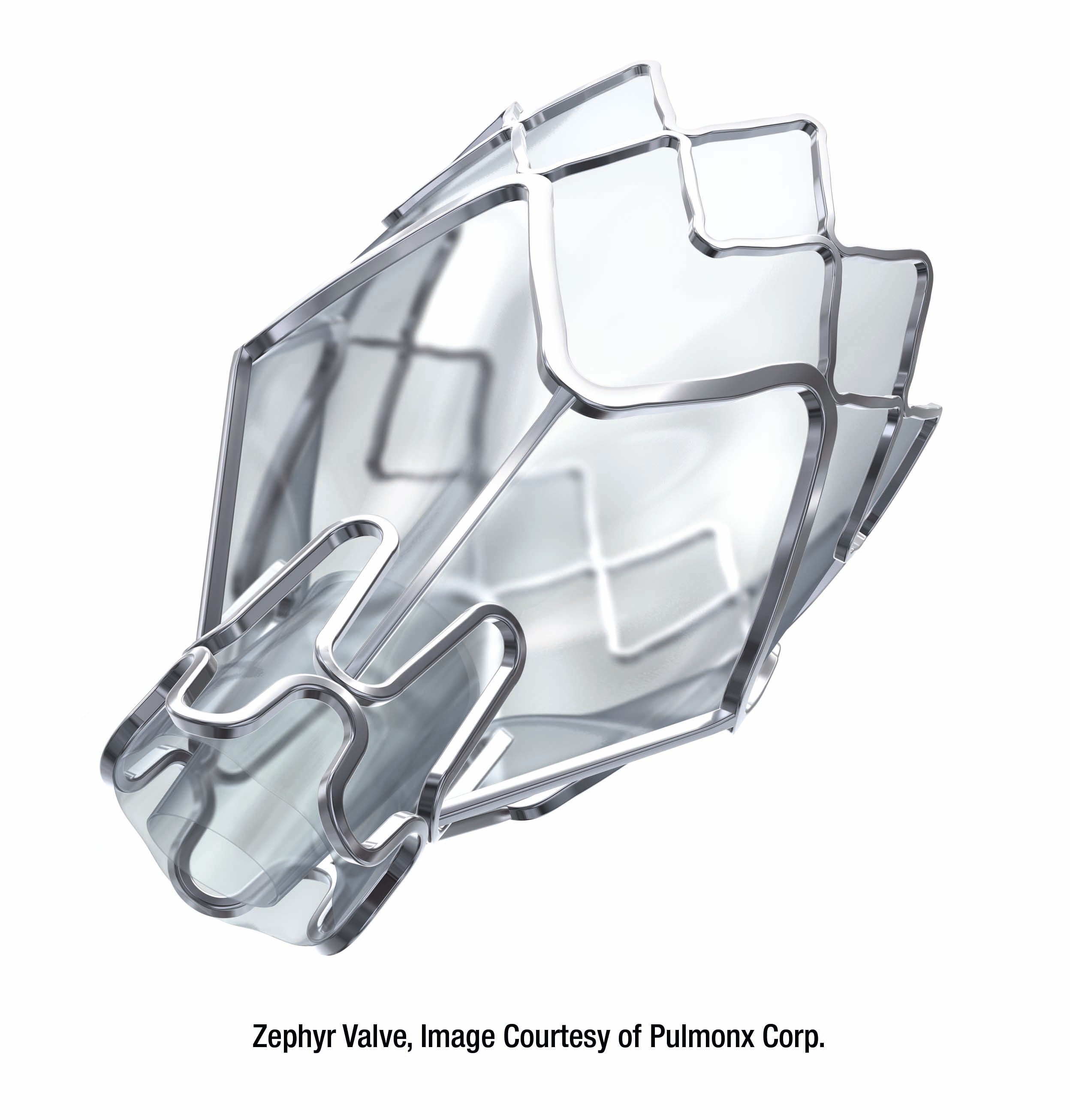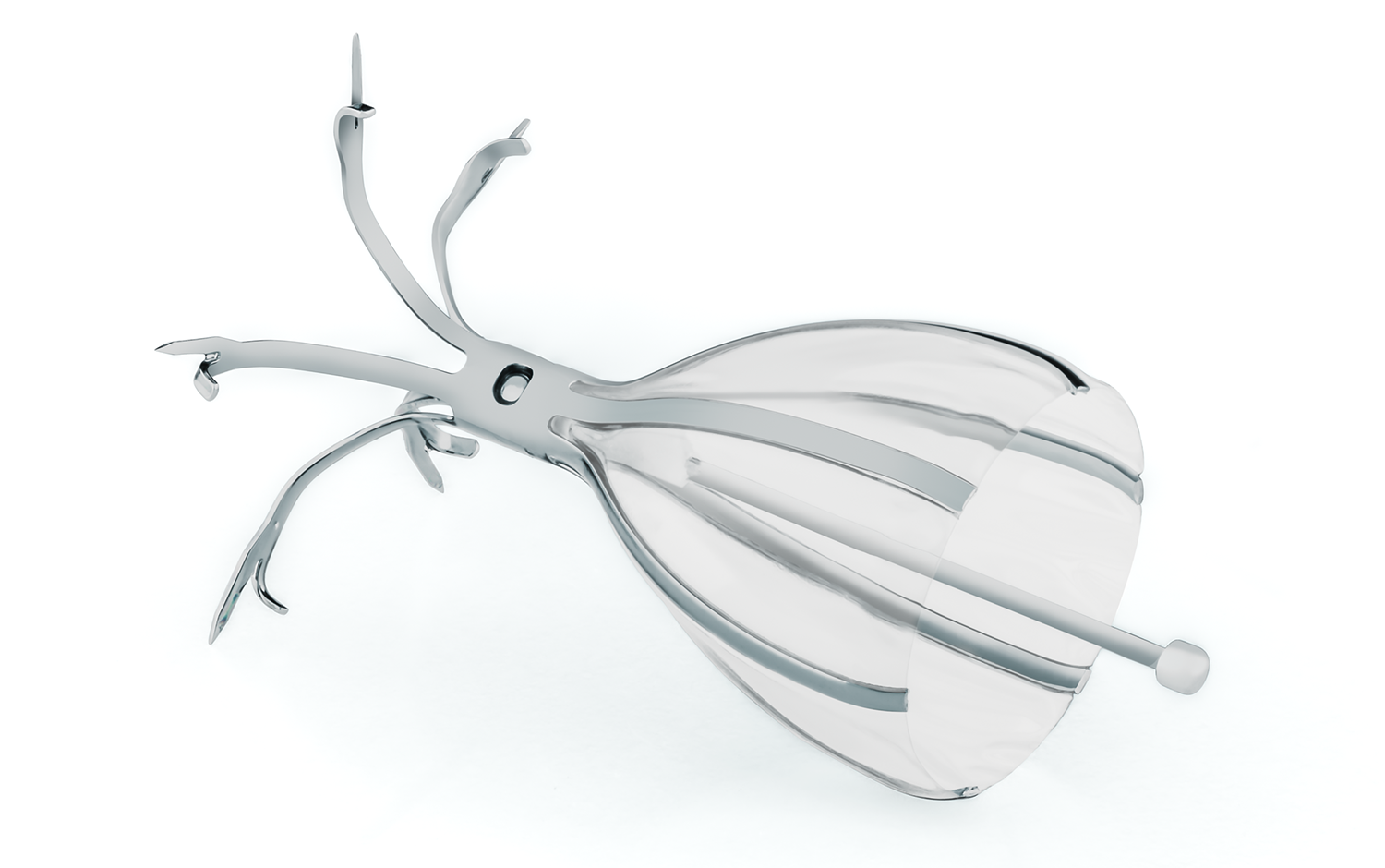Endobronchial Valves
Breathe Easier with Bronchoscopic Lung Volume Reduction
Bronchoscopic lung volume reduction (BLVR) is a nonsurgical procedure to treat advanced emphysema by placing tiny valves in the airways. The procedure takes about an hour and requires no cutting or incisions. During BLVR, an interventional pulmonologist will place an average of four valves in the airways to help patients breathe easier and experience a better quality of life.
What are Endobronchial Valves?
If you have severe COPD/emphysema you may struggle to catch your breath while doing everyday tasks. This is because the damaged parts of your lungs have lost their ability to release trapped air and have become overinflated. Endobronchial Valves are tiny, one-way valves that allow the trapped air to be exhaled from the lungs and prevent more air from becoming trapped there. This helps patients breathe better and do more.
In clinical studies patients treated with endobronchial Valves have been shown to:
- Breathe easier
- Be more active
- Enjoy an improved quality of life

At Trinity Health Of New England, we use two types of endobronchial valves: the Zephyr® Endobronchial Valve and the Spiration® Valve System. Our interventional pulmonology team will choose the best valve for each patient.
Who is Eligible?
Using specialized tests, our interventional pulmonology team determines in advance whether a patient is a good candidate for Bronchoscopic Lung Volume Reduction with endobronchial valves. We conduct a diagnostic workup that may include pulmonary function testing, a CT scan, cardiac function tests and other tests to ensure the patient is a good candidate for treatment.

Generally, candidates who should be evaluated for Valve Treatment are patients who:
- Have a confirmed diagnosis of COPD or emphysema
- Have to stop to catch their breath often, even with taking their medication as directed
- Have reduced lung function (FEV1≤50% predicted)
These are general criteria but only our trained physicians can determine if you are a candidate. There is an evaluation process to determine if you are a candidate for the treatment.
How does the Procedure Work?
If you have severe COPD/emphysema you may struggle to catch your breath while doing everyday tasks. This is because the damaged parts of your lungs have lost their ability to release trapped air and have become overinflated. Endobronchial Valves are tiny, one-way valves that allow the trapped air to be exhaled from the lungs and prevent more air from becoming trapped there. This helps patients breathe better and do more.1

What can Patients Expect?
Endobronchial Valves are placed during a procedure that does not require any cutting or incisions. A typical Valve procedure looks like this:
- Step 1 – The doctor will give the patient medicine to make them sleepy.
- Step 2 – A small tube with a camera, called a bronchoscope, will be inserted into your lungs through your nose or mouth.
- Step 3 – During the procedure your doctor will place on average 4 Endobronchial Valves in the airways. The number of valves placed will depend on the individual anatomy of the patient’s airways and physician discretion.
- Step 4 – You will stay in the hospital for a minimum of 3 nights. Some patients who experience a complication may be required to stay longer.
- Step 5 – After the procedure, you will continue to use the medicines that your doctor has prescribed for your condition.
Meet Our Team

|

|
|---|
In the News

How do I schedule a consultation to see if I am a candidate for the Endobronchial Valves? For more information about this procedure, please call 860-714-4055
For more information about the technology, go to https://uspatients.pulmonx.com/
1 Criner G et al. Am J Respir Crit Care Med. 2018; 198 (9): 1151–1164.
Important Safety Information: The Pulmonx Zephyr® Endobronchial Valves are implantable bronchial valves indicated for the bronchoscopic treatment of adult patients with hyperinflation associated with severe emphysema in regions of the lung that have little to no collateral ventilation. Complications can include but are not limited to pneumothorax (tear in the lung), worsening of COPD symptoms, hemoptysis, pneumonia, and, in rare cases, death. The Zephyr Valve is contraindicated in patients who have not quit smoking. Please talk with your physician about other contraindications, warnings, precautions, and adverse events. Only a trained physician can decide whether a particular patient is an appropriate candidate for treatment with the Zephyr Valve.

